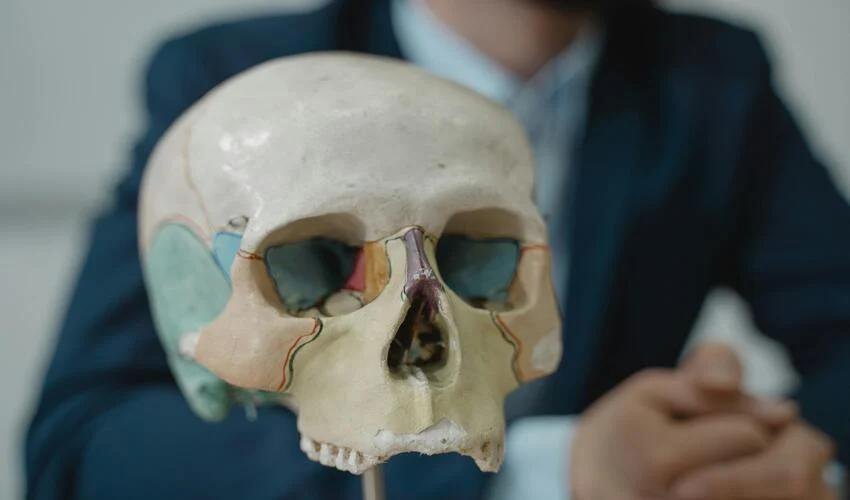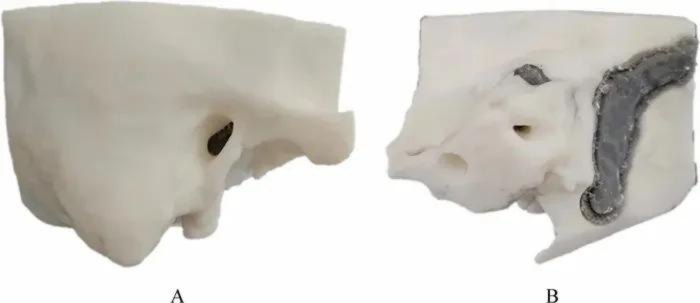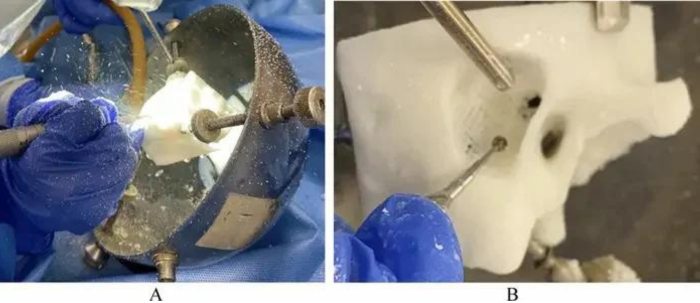3D Printed Mastoidectomy Simulator Improves Surgeon Training and Patient Outcomes

In medicine, one of the most prevalent applications of additive manufacturing is associated with surgical planning and surgeon training. New advancements are continuously surfacing in this field. For instance, 3D models depicting hearts with pathologies have been crafted to facilitate testing and rehearsal of surgical procedures before their application to patients. Similarly, 3D-printed bone models aid in addressing intricate fractures. Recently, a team of scientists in South Korea pioneered the development of a 3D model for simulating a mastoidectomy.
Mastoidectomy is a surgical procedure that consists of removing a part of the bone located behind the ear called the mastoid. The mastoid is a part of the skull with a honeycomb-like structure, i.e. with many cavities. In severe circumstances, ear infections can travel and implant in these cavities and infect the bone. Although the infection can be treated with antibiotics, mastoidectomy is necessary when medication fails.

Front view of the simulator (A) and rear view (B). (Photo Credits: Scientific Reports)
In order to facilitate the practice of surgeons, a team from the Ulsan University School of Medicine in Seoul has developed an educational 3D printed model that simulates mastoid cavities. The prototype was designed based on a computed tomography (CT) scan of an anonymous patient and special importance was placed on reproducing the mastoid cavities. Once the model was printed with this mechanical property, surgeons were able to appreciate the same sensation of “perforation” that they would have perceived when performing a real mastoidectomy.
3D Printing in the Creation of Mastoidectomy Simulator
The model was created using SLA printing technology and white resin with gray resin details to differentiate the different parts of the bone. Although it was created by printing different parts that were then assembled, neither the size nor the properties of the final product were altered. Collaborating closely with additive manufacturing specialists, great care was taken to ensure that both the assembly and post-processing of the parts did not compromise the integrity of the 3D model. Furthermore, the findings revealed a remarkable precision in size, with the model closely aligning with actual dimensions, garnering a satisfaction rate of 95% among expert surgeons, as per specific criteria.
Speaking on these advancements, Jong Woo Chung and Namkug Kim, lead authors of the project’s research, stated, “We aimed to improve surgeon skills and patient health by providing a realistic simulation of a mastoidectomy. We successfully developed a mastoidectomy simulator to provide a realistic drilling sensation of bone by modeling different infill of each anatomical part and enhancing education using assorted colors for bone and other anatomical parts.”

(Photo Credits: Scientific Reports)
Models such as these have demonstrated their efficacy in enhancing surgeons’ proficiency across both straightforward and intricate procedures. Through meticulous design, incorporating all organ properties and the distinct features of individual patients, 3D printing facilitates the creation of lifelike models. In discussing the training of physicians using such tools, the authors remarked, “The realistic training environment provided by the mastoidectomy simulator may reduce potential risks to patients by improving surgeon skills.” To learn more about this project, click here.
What do you think about this 3D printed mastoidectomy simulator? Let us know in a comment below or on our LinkedIn, Facebook, and Twitter pages! Don’t forget to sign up for our free weekly newsletter here, for the latest 3D printing news straight to your inbox! You can also find all our videos on our YouTube channel.
*Cover Photo Credits: Pexels







